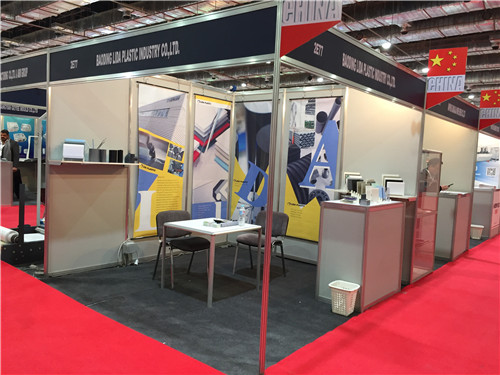Des . 28, 2024 20:13 Back to list
hdpe pipe drip irrigation
The Benefits of HDPE Pipe in Drip Irrigation Systems
Drip irrigation has become an essential agricultural technology in recent years, particularly in water-scarce regions. Among the various components that make up drip irrigation systems, high-density polyethylene (HDPE) pipes have emerged as a cornerstone material due to their excellent properties and advantages. This article explores the benefits of using HDPE pipes in drip irrigation systems, addressing aspects such as durability, efficiency, cost-effectiveness, and sustainability.
Durability and Longevity
One of the standout features of HDPE pipes is their remarkable durability. Unlike conventional materials such as PVC or metal, HDPE is resistant to corrosion, rust, and degradation from chemicals found in the soil. This resistance translates into a longer lifespan for HDPE pipes, which can last for decades even under harsh environmental conditions. Farmers can thus invest in a drip irrigation system without the worry of frequent replacements, making HDPE a reliable choice.
Moreover, HDPE pipes can withstand extreme weather conditions and temperature fluctuations. They are less likely to crack under pressure or during seasonal shifts, making them particularly suited for regions prone to dry spells followed by heavy rainfall. This resilience ensures uninterrupted irrigation, which is vital for maintaining healthy crops.
Efficiency in Water Usage
Water efficiency is a critical factor for farmers dealing with limited water resources. Drip irrigation systems utilizing HDPE pipes are designed to deliver water directly to the plant roots, minimizing evaporation and runoff. This targeted approach not only conserves water but also enhances crop yield and quality. Studies have shown that drip irrigation can reduce water usage by up to 60% compared to traditional irrigation methods.
HDPE pipes further enhance the efficiency of drip irrigation by allowing precise control over the flow rate and distribution of water. Farmers can easily adjust the system to meet the specific needs of different crops, ensuring that each plant receives the right amount of water. The integration of HDPE pipes within smart irrigation systems, complete with sensors and automated controls, further optimizes water use, aligning agricultural practices with sustainable water management principles.
hdpe pipe drip irrigation

Cost-Effectiveness
Initial investment in drip irrigation systems, particularly those involving HDPE pipes, can be daunting for some farmers. However, the long-term benefits often outweigh the initial costs. The longevity and durability of HDPE reduce the need for frequent replacements, thereby decreasing overall maintenance costs. Furthermore, the increased efficiency in water usage translates to lower water bills and reduced energy costs for pumping water.
Additionally, the improved crop yields associated with drip irrigation can significantly boost farmers' income. Enhanced plant health and reduced water stress lead to higher quality produce, which can be sold at premium prices. As agricultural markets increasingly demand sustainably sourced products, farmers using HDPE pipes in their drip irrigation systems are well-positioned to meet consumer preferences.
Environmental Sustainability
In an era where sustainable practices are more critical than ever, HDPE pipes offer environmental benefits. The efficient water usage inherent to drip irrigation systems reduces the pressure on local water sources. By conserving water, farmers can contribute to the sustainability of their communities, especially in arid regions where water scarcity poses a significant challenge.
Moreover, HDPE is a recyclable material, allowing for a circular approach to its use in agriculture. At the end of their life cycle, HDPE pipes can be processed and repurposed, minimizing waste and contributing to a more sustainable agricultural system. This recyclability aligns with global initiatives to reduce plastic waste and promote sustainable agricultural practices.
Conclusion
In summary, the use of HDPE pipes in drip irrigation systems presents numerous benefits to farmers and the environment. Their durability ensures a long lifespan, while efficient water usage promotes sustainability and cost savings. Although the initial investment may be higher, the long-term advantages—ranging from enhanced crop yields to reduced water costs—make HDPE an attractive option for modern agriculture. As the demand for efficient, sustainable farming practices continues to grow, the integration of HDPE pipes into drip irrigation systems will undoubtedly play a pivotal role in shaping the future of agriculture.
-
PP U-channel: Chemical-Resistant, Lightweight & Durable
NewsAug.10,2025
-
Transparent PVC Pipe: Clear Flexible Tubing for Fluids
NewsAug.09,2025
-
Durable PP Rigid Sheet: Versatile & High-Quality Plastic Panels
NewsAug.08,2025
-
Premium Glossy PP Rigid Sheet – Durable & Versatile
NewsAug.07,2025
-
High-Quality HDPE Sheet | Durable Plastic Panels
NewsAug.06,2025
-
High-Precision PVC Rigid Sheets for Vacuum Forming | AI-Optimized
NewsAug.05,2025

